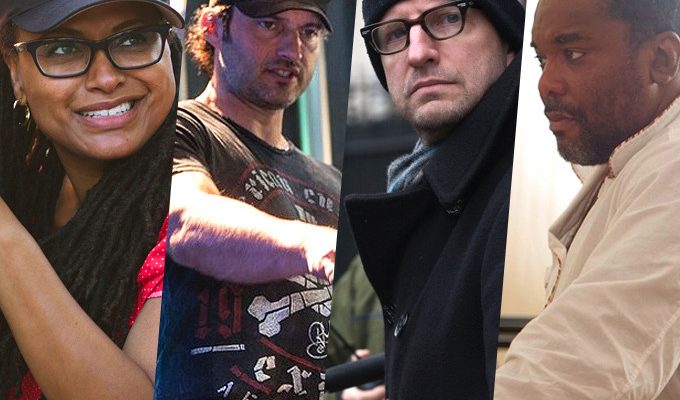 Ava DuVernay
Ava DuVernay
Few filmmakers have gained such huge followings so quickly as Ava DuVernay: It’s just four years since we started learning her name, and she’s gone on to be courted by Marvel and J.J. Abrams, direct a Best Picture nominee, and even have a doll made of her. DuVernay actually started her career as a publicist, setting up her own firm in 1999 that went on to huge success. DuVernay gradually moved into filmmaking, first with 2008 documentary “This Is The Life,” then with microbudget first feature “I Will Follow,” which won acclaim from Roger Ebert. But DuVernay really exploded when “Middle Of Nowhere,” a finely honed melodrama about the wife of a convict falling for a bus driver, premiered at Sundance, winning DuVernay the Directing award at the festival. Though it didn’t blow up at the box office, she soon landed a big gig, reteaming with “Middle Of Nowhere” star David Oyelowo for historical drama “Selma,” which was picked up by Paramount and went on to healthy box-office grosses and two Oscar nominations, including Best Picture (and an uproar when it didn’t get more).
 Cary Fukunaga
Cary Fukunaga
With just three features and a TV series (though one of the most-praised TV series in recent times) behind him, Cary Fukunaga has earned the kind of following that filmmakers with many times the output would be envious of. The filmmaker made his first appearance in Park City aged just 27 when his NYU student film “Victoria para Chino” was selected for the festival. After developing it through the Sundance Labs, his first feature “Sin Nombre,” a muscular drama about Mexican gangs and a Honduran immigrant, premiered at the festival in 2009. Winning rave reviews, it saw Fukunaga pick up the Directing Award (and cinematographer Adriano Goldman the Cinematography one), and was picked up by Focus Features. He followed it swiftly with a well-received new take on “Jane Eyre” starring Mia Wasikowska and Michael Fassbender, but truly exploded with the success of HBO series “True Detective,” which Fukunaga helmed all eight episodes of the first series of, and made him one of the most sought-after directors around.
 Catherine Hardwicke
Catherine Hardwicke
Unlike many of these filmmakers, Catherine Hardwicke had been working in the film industry long before she moved into directing: She was a top production designer, with credits including “Posse,” “Tombstone,” “Three Kings” and “Laurel Canyon.” With a friend’s daughter, Nikki Reed, she co-wrote the screenplay to the drama “Thirteen,” based partly on Reed’s experiences, and made her directorial debut with the movie, which premiered at Sundance in 2003. The film became one of the talking points of Park City that year, and won Hardwicke the Directing Award from the jury, before being picked up by Fox Searchlight and taking over $10 million at the box office. Her subsequent films, “Lords Of Dogtown” and “The Nativity Story,” didn’t make much impact, but she found enormous success with “Twilight,” the young-adult adaptation that made her, up to that point, the top-grossing female director of a live-action movie.
 Todd Haynes
Todd Haynes
Now one of our finest directors, Todd Haynes had first come to people’s attentions thanks to his short “Superstar: The Karen Carpenter Story,” made when still a film student and telling the life of the singer through the medium of Barbie dolls. The film was swiftly withdrawn for unauthorized use of the music, but Haynes fulfilled its promise with debut feature “Poison,” which screened at the festival in 1991. A scrappy, provocative portmanteau picture that many credit as a key work of New Queer Cinema, it marked his first collaboration with the great producer Christine Vachon, who’s produced all his subsequent movies, and won him a Grand Jury Prize. Haynes wasn’t immediately embraced by the mainstream, but he’s only grown in stature over the years, with stars clamoring to appear in films like “Velvet Goldmine” and “I’m Not There,” and the establishment finally embracing him with a record 21 Emmy nominations for “Mildred Pierce,” and 6 nods for the outstanding “Carol” this year, even if Best Director again eluded him.

Nicole Holofcener
She doesn’t get the kind of blockbuster audiences of some of the filmmakers here, but Nicole Holofcener has been steadily building a following since she broke out in 1996. Having studied at Columbia under Martin Scorsese, one of her student films, “Angry,” screened at Sundance, followed in 1996 by the excellent indie rom-com “Walking And Talking,” which gave early breaks to Catherine Keener, Anne Heche and Liev Schreiber, among others. Holofcener swiftly found work directing in TV on the likes of “Sex & The City” and “Gilmore Girls,” but unlike some filmmakers who get stuck in that world, continued to move back and forth: The raw, unsparing “Lovely & Amazing” followed in 2001, and the starrier “Friends With Money” in 2006. She’s only become more prolific since, happily: “Please Give,” arguably her best work, hit theaters in 2010, and “Enough Said” proved her biggest hit to date in 2013, while she’s been directing most of your favorite TV comedies, from “Inside Amy Schumer” and “Parks & Recreation” to “Orange Is The New Black” and “Togetherness.”

